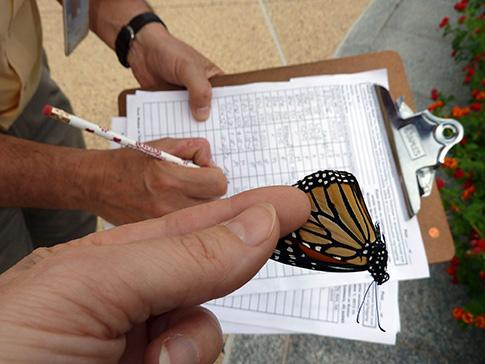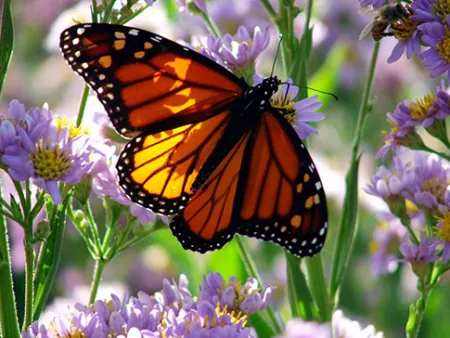One of the great things about working with monarch butterflies is that people care so much about them. In fact, people care so much about monarchs that they have become the focus of a vast network of citizen scientists that collects data to understand their population dynamics, which is very useful for conservation science.
Why are monarchs so beloved? Unlike the target species of other conservation efforts, monarchs aren’t known for providing critical ecosystem services or direct monetary benefits for people. Rather, it is the story of their fantastical migratory journey that captures the attention of scholars and “backyard scientists” alike. Monarchs (Danaus plexippus) overwinter in dense colonies in very specific mountain locations in Mexico, then follow a multi-generational migratory pathway that brings them all the way to southern Canada. At the end of each season, the final generation undertakes a truly phenomenal migration—up to 4,500 kilometers (more than 4,000 miles)—back to those same mountains in central Mexico.
Because monarchs are one of the most common types of butterflies in North America (although their population numbers are likely declining), people see them regularly, depending on where in North America they live. This familiarity has opened the door for citizens to become actively engaged in their protection—that’s where I come in.
At SESYNC, I work on a project that links together various groups that have initiated citizen-science monitoring programs. I am also part of a synthesis group that is integrating data from multiple citizen-science programs to track the monarch’s large-scale dynamics. Citizen-scientist projects, which have been monitoring monarchs intensively for decades, have provided the opportunity for these types of in-depth studies by the scholarly community. Currently, citizen scientists spend nearly 100,000 hours each year collecting data on this fascinating species.

Monarchs are an exemplar of how citizen science can transform the way we conduct—and use—environmental research. Citizen science has recently become a major focus in both social and environmental research. This popularity is due in large part to an increasingly engaged citizenry that is eager to document its interactions with nature, and now has the tools to do so (like smartphone technology enabled with GPS, cameras, and web access). This effort complements the science community’s need for biological data at large spatial and temporal scales. The widespread data collection of citizen-science has also inspired widespread action: thousands of people now plant monarch “way-stations” in their gardens, which replaces some of the habitat lost through large-scale spraying in agricultural fields that has taken place since genetically-modified crops have become the norm. Here at SESYNC, we’re working on how to maximize both the social and environmental benefits of this transformative enterprise.
You can check out more information about monarch monitoring and how it contributes to our understanding of the species’ biology and conservation by visiting www.monarchnet.org and watching the recent Google Earth Tour on monarch migration. I was contacted by Atlantic Public Media, a group that is working on a new way of using Google Earth to demonstrate the wonders of “species on the move.” The result is a pretty cool video that can be seen below.
